Fire hydrant maintenance forms the backbone of effective fire protection systems. However, many property owners and facility managers still overlook critical maintenance requirements.
This guide covers essential fire hydrant maintenance practices, NFPA compliance standards, test procedures, and repair techniques that guarantee optimal performance when emergencies strike.
You’ll discover proven maintenance schedules, common failure points, cost-effective repair strategies, and documentation requirements that protect both lives and property.
If you’re responsible for a single facility or manage extensive fire protection systems, these maintenance practices will help you maintain compliance and reduce long-term costs plus liability risks.
Fire Hydrant Maintenance Requirements
Effective fire hydrant maintenance starts with knowing the fundamental requirements governing proper operation.
These systems face constant exposure to environmental elements, underground corrosion, and mechanical stress that can compromise their reliability over time.
NFPA Standards and Compliance
NFPA 291 requires that fire hydrant flow tests be performed every 5 years and fire hydrant inspections be performed annually.
These standards establish minimum requirements for operational readiness, but many jurisdictions implement stricter requirements based on local conditions and risk factors.
| Maintenance Activity | NFPA Frequency | Enhanced Frequency | Key Benefits |
| Visual Inspection | Annual | Semi-annual | Early problem detection, reduced emergency repairs |
| Flow Test | Every 5 years | Every 3 years | Performance verification, capacity confirmation |
| Operational Test | Annual | Annual | Mechanical function verification, valve operation |
| Lubrication | As needed | Annual | Smooth operation, reduced wear, extended life |
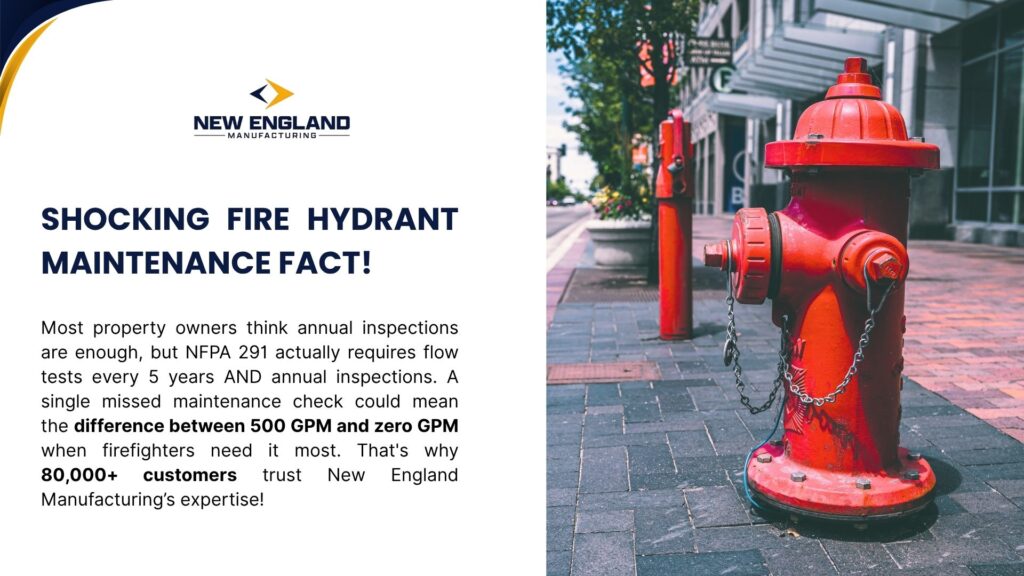
Common Maintenance Challenges
Fire hydrant maintenance faces several common challenges that can compromise system reliability.
| Common Problem | Primary Cause | Warning Signs | Prevention Method |
| Valve Stem Corrosion | Water exposure, lack of lubrication | Difficult operation, leaks | Regular lubrication, protective coats |
| Thread Damage | Improper connections, impact | Hard to connect hoses, cross-threads | Proper caps, careful operation |
| Drain Problems | Sediment buildup, debris | Poor drainage, water pools | Regular flush, drain inspection |
| Barrel Cracks | Freeze damage, ground shift | Visible cracks, water leaks | Proper drainage, foundation support |
Fire Hydrant Inspection Procedures
Systematic fire hydrant inspection forms the foundation of effective maintenance programs. These procedures identify potential problems before they compromise system performance and help prioritize maintenance resources for maximum effectiveness.
1. Visual Inspection Checklist
Professional fire hydrant inspection starts with a comprehensive visual assessment of all accessible components. This process requires a systematic examination of both above-ground and below-ground elements that affect hydrant performance.
| Inspection Component | Critical Check Points | Common Issues | Immediate Actions Required |
| Hydrant Barrel | Rust, impact damage, and weather wear | Clean, repaint, and schedule repairs | Clean, repaint, schedule repairs |
| Operation Mechanism | Valve operation, handle condition | Stiff operation, broken handles | Lubricate, replace components |
| Outlet Connections | Thread condition, cap security | Damaged threads, caps lost | Repair threads, replace caps |
| Drain System | Proper drainage, obstruction | Poor drainage, debris | Clear obstructions, repair drains |
2. Operational Test Methods
Operational tests verify that hydrants function correctly under normal and emergency conditions. These tests validate mechanical operation, water delivery capacity, and system integration with broader fire protection infrastructure.
| Test Type | Equipment Needed | Typical Duration | Key Measurements |
| Static Pressure Test | Pressure gauge, cap with valve | 5-10 minutes | PSI at rest, baseline pressure |
| Flow Test | Pitot tube, pressure gauges | 15-30 minutes | GPM flow rate, residual pressure |
| Operational Test | Basic tools, observation | 10-15 minutes | Valve operation, leak detection |
| Flush Test | Flow measurement tools | 5-15 minutes | Water clarity, flow volume |
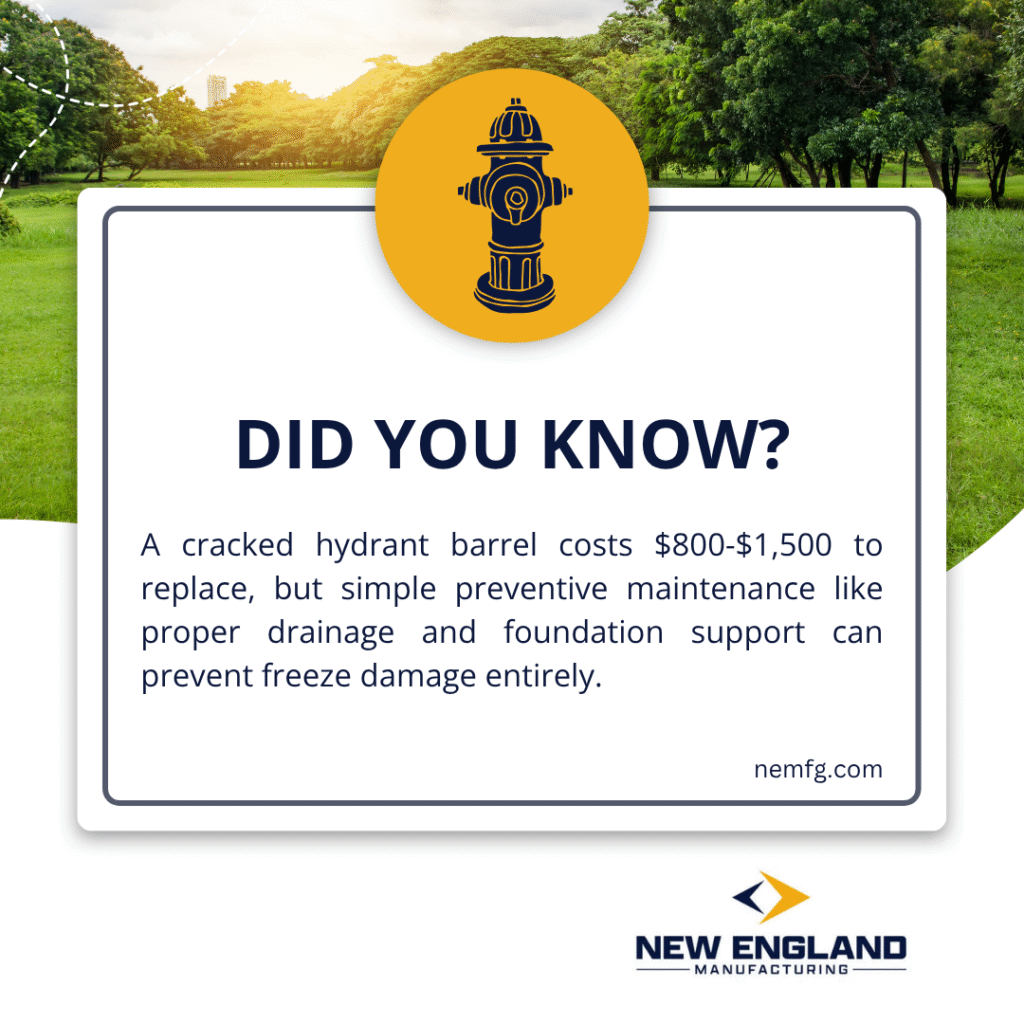
Fire Hydrant Testing Protocols
Regular fire hydrant testing makes sure that the system works properly and shows if any maintenance is needed before it becomes a problem during an emergency. These checks make sure hydrants meet today’s standards and can handle future needs too.
- Flow Test Procedures
Flow tests measure actual water delivery capacity under controlled conditions. This process requires specialized equipment and trained personnel to obtain accurate measurements while they maintain system safety and minimize disruption to normal operations.
Professional flow tests require calibrated pressure gauges, flow measurement devices, and proper documentation procedures.
Quality test equipment guarantees accurate measurements that support both maintenance decisions and regulatory compliance requirements.
- Pressure Test Standards
Pressure tests validate hydrant integrity under maximum operation conditions. These tests identify potential failure points and verify that components can withstand emergency pressures without catastrophic failure.
Professional pressure tests require careful attention to safety procedures and proper equipment calibration. Pressure calculation knowledge helps guarantee accurate tests and proper interpretation of results.
Fire Hydrant Repair and Service
Effective fire hydrant repair requires knowledge of common failure modes and proper repair techniques that restore full functionality while they maintain long-term reliability.
1. Common Repair Issues
Fire hydrant repair typically addresses mechanical wear, corrosion damage, and seal failures that develop through normal operation and environmental exposure.
These issues often appear gradually but can compromise system performance if not addressed promptly.
| Repair Type | Difficulty Level | Average Cost Range | Typical Timeline |
| Valve Stem Replacement | Moderate | $150 – $300 | 2-4 hours |
| Thread Repair | Easy to Moderate | $75 – $200 | 1-2 hours |
| Barrel Replacement | Difficult | $800 – $1,500 | 4-8 hours |
| Drain System Repair | Moderate | $200 – $500 | 2-6 hours |
2. Preventive Maintenance Strategies
Preventive fire hydrant maintenance reduces repair costs and extends system life through systematic attention to components before they fail. These strategies focus on wear patterns and environmental factors that cause most hydrant problems.
| Maintenance Task | Spring | Summer | Fall | Winter |
| Visual Inspection | Full inspection after freeze damage | Quick safety check | Pre-winter preparation | Cold weather operation check |
| Lubrication | Complete lubrication | Light maintenance | Winter prep lubrication | Emergency lubrication only |
| Flow Tests | Ideal test conditions | Good for tests | Final tests before winter | Emergency tests only |
| Paint/Coats | Best weather conditions | Good conditions | Adequate conditions | Avoid if possible |
Fire Hydrant Flush and Clean
Regular fire hydrant flush removes sediment, debris, and biological growth that can compromise system performance and water quality. These procedures maintain optimal flow capacity and prevent contamination of potable water supplies.
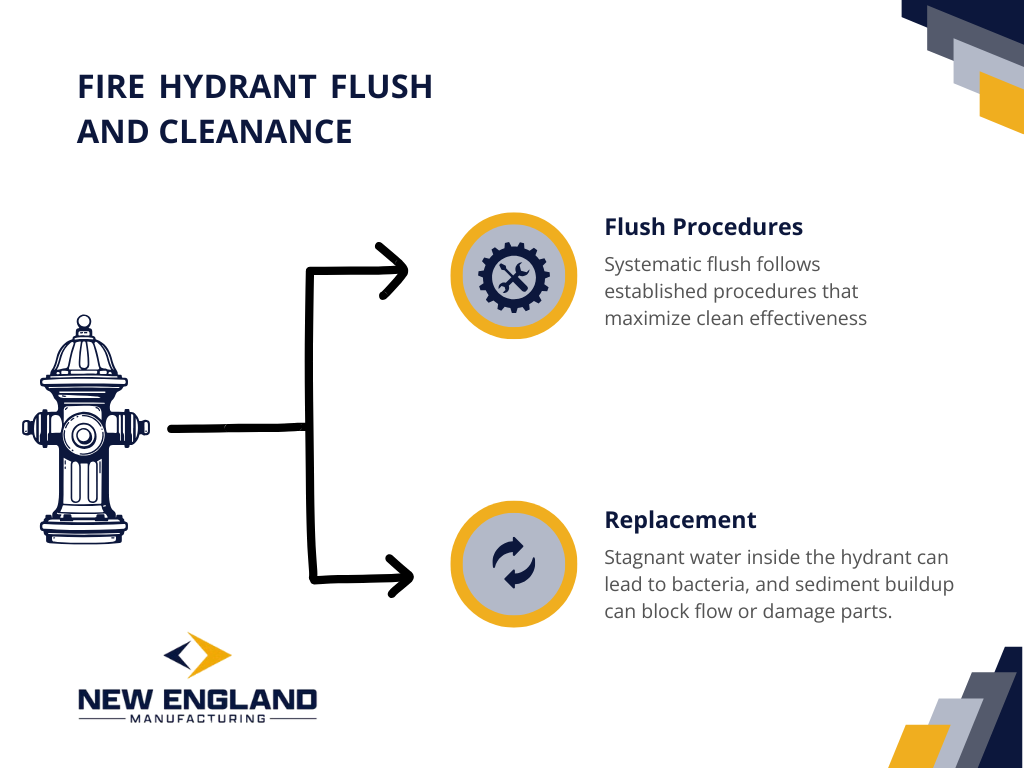
1. Flush Procedures
Systematic flush follows established procedures that maximize clean effectiveness while they minimize disruption to water service.
The process typically involves open hydrant outlets in sequence to create high-velocity flow that removes accumulated debris.
| Water Quality Issue | Potential Causes | Health Risk Level | Required Action |
| Discolored Water | Rust, sediment, mineral deposits | Low | Flush until clear, investigate source |
| Unusual Odor | Biological growth, chemical contamination | Medium | Flush until clear, investigate the source |
| Visible Particles | Stop use, test the water, disinfect system | Medium | Extended flush, system clean |
| Chemical Taste | Cross-contamination, pipe reactions | High | Immediate shutdown, professional test |
- Water Quality Considerations
Fire hydrant maintenance also protects water quality. Stagnant water inside the hydrant can lead to bacteria, and sediment buildup can block flow or damage parts.
To keep drinking water safe, hydrants must have working backflow prevention. Regular checks help stop contamination during use or emergencies.
Documentation and Record Maintenance
Comprehensive documentation supports effective fire hydrant maintenance by tracking system performance, maintenance activities, and compliance with regulatory requirements. These records provide valuable data for maintenance schedule optimization and capital improvement justification.
| Record Type | Required Information | Retention Period | Compliance Purpose |
| Inspection Reports | Date, condition, deficiencies | 5 years minimum | NFPA compliance, liability protection |
| Test Results | Pressure, flow, performance data | System lifetime | Design validation, capacity verification |
| Repair Records | Work performed, parts used, cost | System lifetime | Warranty track, asset management |
| Personnel Records | Personnel qualifications, certifications | Employment + 3 years | Competency verification, liability protection |
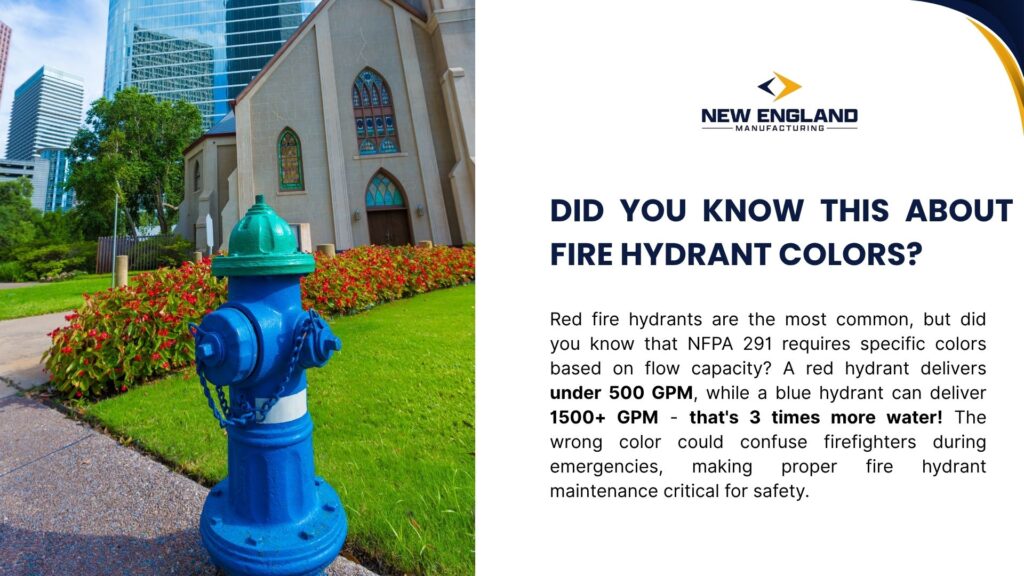
Cost-Effective Maintenance Strategies
Effective fire hydrant maintenance balances system reliability with cost control through a strategic plan and resource allocation. These strategies focus on maintenance value maximization while meeting regulatory requirements and performance objectives.
- Maintenance Plan and Schedule
Strategic maintenance plans reduce costs by coordinating activities, optimizing resource utilization, and preventing costly emergency repairs. An effective plan considers seasonal factors, resource availability, and system priorities that affect maintenance efficiency.
Risk-based maintenance prioritizes resources based on hydrant criticality, condition, and failure consequences. This approach guarantees that limited maintenance resources focus on hydrants where failures would have the greatest impact on life safety and property protection.
Corrosion prevention involves protective coats, cathodic protection, and environmental controls that slow oxidation processes.
Fire hydrant color code knowledge helps identify systems that may require enhanced corrosion protection based on water quality and environmental factors.
Fire Hydrant Color Codes and Flow Capacity
Fire hydrant color codes show how much water a hydrant can deliver during an emergency. These colors follow NFPA 291 and help firefighters know what to expect at a glance.
They also help with inspections, maintenance, and testing. Each color matches a flow range and points to the hydrant’s role in the system.
NFPA Fire Hydrant Color Codes:
| Hydrant Color | Flow Rate (GPM) | Common Use |
| Red fire hydrant(most popular) | Under 500 GPM | Homes, rural areas |
| Yellow fire hydrant | 500–999 GPM | Suburbs, public water systems |
| Green fire hydrant | 1000–1499 GPM | High-demand zones, businesses |
| Blue fire hydrant | 1500+ GPM | Major lines, industrial zones |
| Black fire hydrant | N/A | Non-functional or out of service |
| Yellow (body color) | N/A | Public hydrant connected to city water |
If the color doesn’t match the last flow test, it should be corrected right away. The wrong color could slow down firefighters or lead to mistakes during emergencies. That’s why fire hydrant maintenance is important.
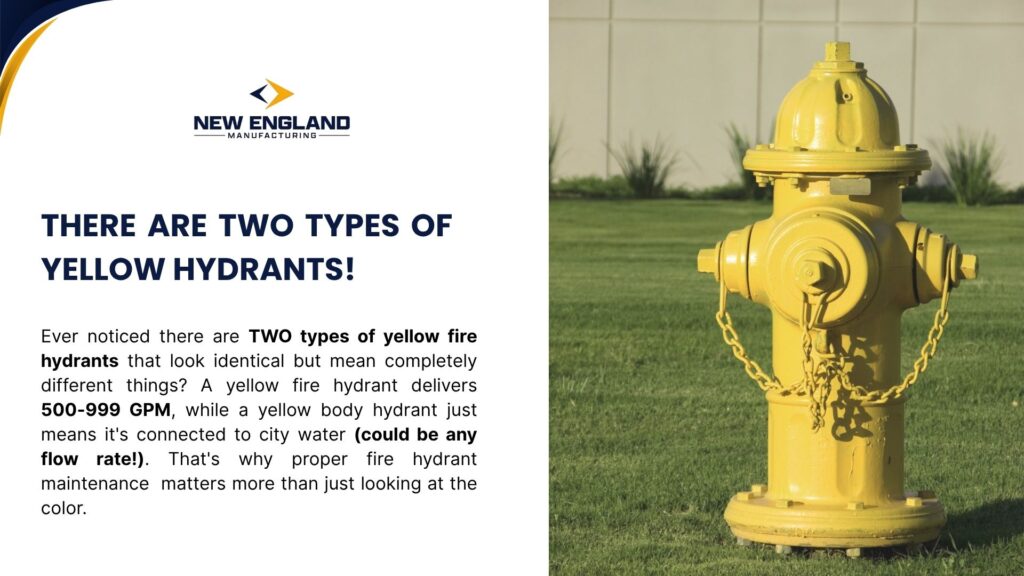
Never seen a black fire hydrant before? Here’s what it means and why it matters.
Final Word on Fire Hydrant Maintenance
Good fire hydrant maintenance keeps systems ready, safe, and up to code. It depends on solid knowledge of NFPA standards, regular testing, and clear documentation.
Strong programs cover both short-term performance and long-term reliability. Preventive work, smart planning, and enough resources help avoid costly failures.
The best teams combine hands-on skills with management support. Ongoing staff training keeps everyone sharp and reduces mistakes.
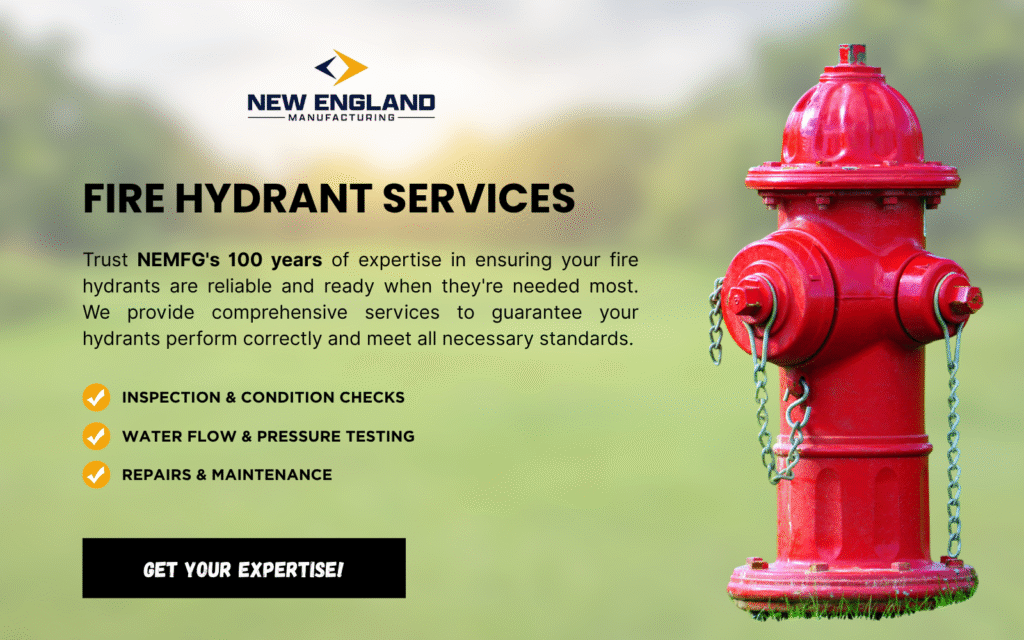
For over 100 years, New England Manufacturing has been known as the top #1 business for providing the best water system equipment.
We also have the skills to make sure your fire hydrants work correctly and follow the rules. If you need expert help checking or taking care of your red fire hydrant or any other hydrant, so you don’t have to worry about following rules or if it will work when needed, trust NEMFG. Become part of our 80K happy customers by emailing us at sales@nemfg.com.

